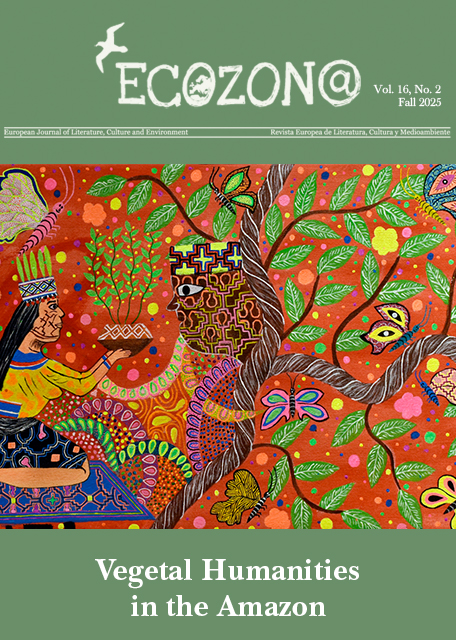Machines, Topography, Organ Dialectic: The Science Fiction Ecology of Metropolis
DOI:
https://doi.org/10.37536/ECOZONA.2012.3.2.472Schlagworte:
Science-fiction, Techno-culture, Ecocinema, Machines, Urban Ecology, Topography, ciencia ficción, tecno-cultura, eco-cine, máquinas, ecología urbana, topografíaAbstract
Since 1927, Fritz Lang’s Metropolis has circulated as stills, clips, and a sequence of increasingly more complete cuts in the global social imaginary. Whilst scholars have critiqued this science fiction film from gender, techno-culture, and German socio-political perspectives, this article analyzes the film afresh by reading it ecocritically. The article moves through three key components of Metropolis. The first movement examines the representational and ideological contradictions within the variety of machines inside the diegetic city to deconstruct the common interpretation of the film’s machines as dehumanizing and alienating people from a “natural” world. The second movement reads the film’s urban topography, dwelling particularly on Rotwang’s house as indigestible history and the Club of the Sons as “nature”-themed fantasy place. Third, the article analyzes what I am calling the film’s “organ dialectic” of antithetical hand and head sublated in the heart to show how this metaphor structure complicates not only the film’s conclusion but also common ecological epistemological and ontological theories that invoke the organic and the mechanic. Ultimately, the article assembles these three analytical components to argue that contradictions within the narrative, representational, and rhetorical structures of Metropolis illuminate crucial ideological challenges of thinking ecology and technology together, whether in 1927 or today.
Resumen
Desde 1927, Metrópolis de Fritz Lang’s ha circulado como fotograma, clip, y una secuencia the cortes cada vez más completos en el imaginario social global. A pesar de las críticas que académicos han hecho a este film de ciencia ficción desde perspectivas de género, tecno-cultura y socio-política alemana, este artículo analiza la película nuevamente, haciendo una lectura ecocrítica. El artículo navega a través de tres componentes claves de Metrópolis. Primero, se examinan las contradicciones representacionales e ideológicas dentro de la variedad de máquinas dentro de la ciudad diegética para deconstruir la interpretación común de las máquinas del film como entes que deshumanizan y alienan a los seres humanos de un mundo “natural”. Segundo, se hace una lectura de la topografía urbana desplegada en el film, haciendo particular hincapié en la casa de Rotwang como historia indigerible y el Club of the Sons como lugar que evoca un imaginario de lo “natural”. En tercer lugar, el articulo analiza el film desde el ángulo de lo que denomino la “dialéctica orgánica” de antítesis de cabeza y mano que hace síntesis en el corazón para ilustrar cómo esta estructura metafórica complica no solo la conclusión del film sino también las teorías ecológicas epistemológicas y ontológicas que invocan lo orgánico y lo mecánico. Por último, el artículo ensambla estos tres componentes para argumentar que las contradicciones dentro de las estructuras narrativas, representacionales y retóricas de Metrópolis dan luz a desafíos ideológicos de como pensar en ecología y tecnología conjuntamente, ya sea en 1927 o en el presente.
Downloads
Downloads
Zusätzliche Dateien
Veröffentlicht
Ausgabe
Rubrik
Lizenz
Authors who publish with this journal agree to the following terms:
a) Authors retain copyright and grant the journal right of first publication with the work simultaneously licensed under a Creative Commons Attribution License that allows others to share the work with an acknowledgement of the work's authorship and initial publication in this journal (CC BY-NC for articles and CC BY-NC-ND for creative work, unless author requests otherwise.
b) Authors are able to enter into separate, additional contractual arrangements for the non-exclusive distribution of the journal's published version of the work (e.g., post it to an institutional repository or publish it in a book), with an acknowledgement of its initial publication in this journal.
c) Authors are permitted and encouraged to post their work online (e.g., in institutional repositories or on their website) prior to and during the submission process, as it can lead to productive exchanges, as well as earlier and greater citation of published work (See The Effect of Open Access).










